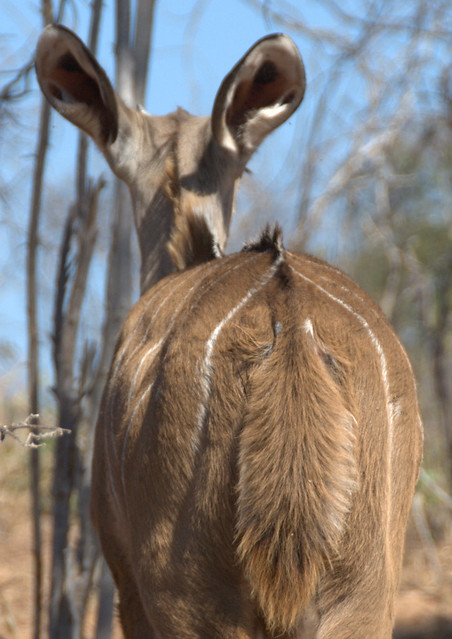This isn't just a quirky footnote; it's a living piece of cultural heritage, with yearly competitions drawing crowds who cheer for the farthest spit. And yes, in 2025, it's still happening-recent events at game reserves like Shumbalala and Indlovu River Lodge kept the pellets flying, complete with post-spit braais (barbecues) to wash away the... experience.
The Afrikaner Folktale
The Rules: Simple, Sticky, and Surprisingly Strategic Bokdrol Spoeg dates back to Afrikaner hunting lore-legend has it frustrated hunters, after a kudu slipped away, would grab a dried pellet from the ground and hawk it toward the horizon like a parting curse.
How to Become a Greater Kudu Dung Spitting Champion
Fast-forward to today: Competitors collect small, hard nuggets of Greater Kudu dung (or sometimes impala or springbok for variety), roll them in their mouth to moisten just enough for grip, then launch them down a measured track.
- The Goal : Spit the pellet the farthest. World record? 15.56 meters, set by Shaun van Rensburg in 2006-still unchallenged.
- The Skill : Texture is king. Too dry? It crumbles. Too soft? It sticks. Pros swear by sun-baked pellets from highveld grass, which fly like tiny rugby balls.
- The Setup : Informal fields or lodge lawns, with judges marking distances in meters.
Prizes? Bragging rights, a trophy, and maybe a bottle of mampoer (peach brandy) to disinfect the vibes. It's not Olympics-bound (yet), but it fits right alongside global oddities like Germany's Mudflat Olympics or England's Worm Charming Championship (Guinness record: 567 wrigglers lured in 30 minutes). Even ESPN's wild early days-Slo-Pitch Softball and Munster Hurling-would've slotted this in seamlessly.
The Smell Factor: The Unspoken (and Unavoidable) Spectacle
The aroma is Bokdrol Spoeg's secret weapon, or its Achilles' heel, depending on your nose. Let's be real: No one enters this game blind to the scent profile. Kudu dung, being herbivore pellets, isn't the pungent nightmare of carnivore waste; it's more like a dry, earthy whisper of the bushveld.
Think sun-warmed grass clippings mixed with faint hay and a subtle, nutty undertone from the acacia leaves kudu love to munch. But in competition? The air thickens. As 20–30 spitters line up, the collective mouth-rolling phase unleashes a wave of that musty, fermented-grass perfume-reminiscent of a barn after rain, or an overripe compost heap with wildflower notes.
Spectators upwind get a gentle whiff; downwind folks? It's a full bouquet, amplified by the midday sun baking the pellets pre-spit. One 2025 competitor at Shumbalala Game Reserve quipped to CNN Africa: Smells like defeat if you pick a bad one-sour milk vibes from wet grass dung.
But victory? Fresh as a veld after fire. Pro tip from the pros: Dip your pellet in a quick swig of water (or mampoer for the brave) to mellow it out. And post-event? That braai smoke clears the palate faster than you can say ekstra afstand! (extra distance). It's not glamorous, but it's authentic-the smell bonds the crowd, turning strangers into story-sharers over boerewors rolls.
Did you know? Competitions now include hygiene rounds-pellets sterilized with alcohol dips since 2020.
Why It Endures: Culture in Every Pellet No matter the skeptics, Bokdrol Spoeg thrives on community-the thrill of the hurl, the laughter in the line, and that unbreakable tie to South Africa's rugged roots. It's a reminder: Sports aren't just about speed or strength; sometimes, they're about savoring the absurd with friends under an acacia sky. Will we see gold-medal glory? My bet's on not soon, but if it happens, South Africa's claiming the podium. Until then, grab a pellet (or just a beer) and raise a glass to the hunters who turned loss into legend. Got a weird sport story from your corner of Africa? Drop it in the comments-let's build the archive together.


